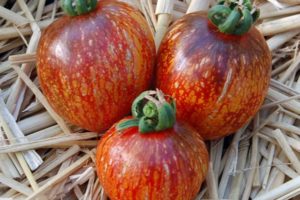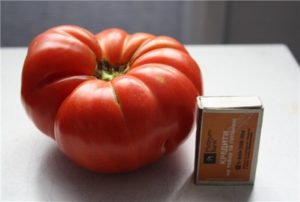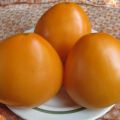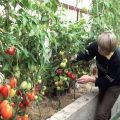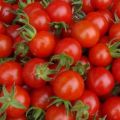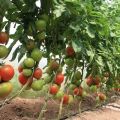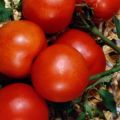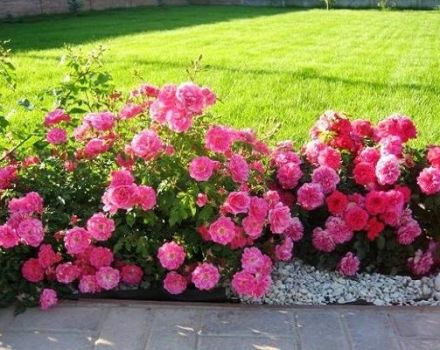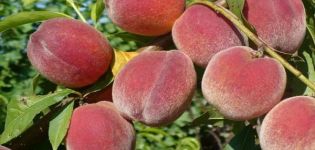Description of the tomato variety Ob domes and its characteristics
Tomato Ob domes is an early ripe variety, a hybrid, the fruits of which are dome-shaped. Outwardly, tomatoes look like persimmons. Fruit color - raspberry pink, bright enough. Tomato adapts well to bad climates and is quite suitable for growing in the northern regions of the country.
Description of tomato varieties
Ob domes are a low plant, the maximum height of which can reach 60 centimeters. Due to such dimensions, the treatment of the bush ceases to present any complexity. If you practice growing the Ob domes in a greenhouse, you can get a bush up to 70 centimeters high.
This variety, as the description on the package says, refers to hybrids with a fairly early ripening period. The period from the moment of sowing seeds for seedlings to collecting the first ripe fruits is no more than 100 days. An exception may be situations when the summer is very cold, and the amount of sunlight is less than usual.
The most optimal result can be obtained if the Ob domes are grown in 3 - 5 stems. Since the mass of fruits is large enough, the plant needs to be tied up even if it is low in height. Stepson, on the advice of experienced vegetable growers, should be removed, but it is not recommended to do this above the ovary of the first brush.
Due to the fact that the size of such a tomato is small, up to 6 bushes can be "accommodated" on one square meter. If tomatoes are grown in open beds, one plant can produce up to 5 kilograms of selected Obskie Kupola tomatoes. If the bushes grow in a greenhouse, we can talk about an even higher yield - up to 6 kilograms from one copy.
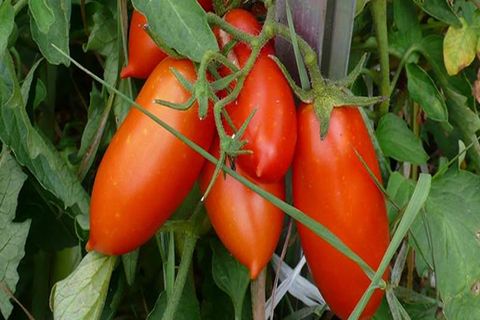
The mid-early variety, related to hybrids, is determinant. Shows resistance to most diseases from which plants of the Solanaceae family suffer. The tomato is grown by experienced summer residents everywhere, since the glory of a variety that gives a guaranteed harvest has been entrenched in it.
Sowing seedlings should be done two months before the expected date of planting seeds in the ground. The approximate landing pattern is 400 * 500 millimeters.
The plant is not tall, but additional height can be obtained at the expense of stepchildren: it is recommended to grow the Ob domes in several stems, the number of which can be up to five.
The optimum temperature at which the maximum germination of seeds of the Ob domes is stated is 23 - 25 ° С. The variety reacts very sensitively to watering and feeding. The introduction of complex fertilizers is a good support for the Ob domes.
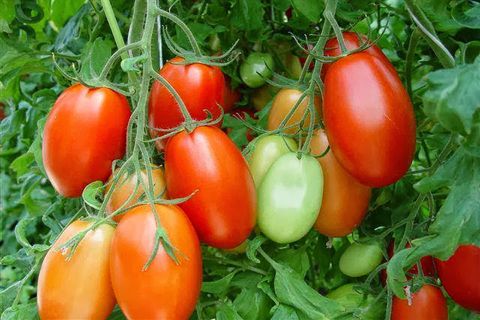
In order for the seeds to sprout as soon as possible, they are first placed in growth stimulants, which have a beneficial effect on germination and seed health.
Fruit characteristics
The fruits of a medium-sized Obskie dome tomato variety. Their weight ranges from 200 to 260 grams. Color - bright red or raspberry pink. The pulp of the tomato of this variety is fleshy, sweet, the skin is very dense. Fruits are perfect for preservation, preparation of preparations in the form of sauces and pastes, they become an excellent basis for salads and first courses.
Some vegetable growers who leave positive reviews about the tomato note that the Ob domes resemble persimmons in appearance.
Origin of the variety
Tomatoes Ob domes were bred by Siberian breeders. The legal entity responsible for the development is the agrotechnical firm "Siberian Garden". This variety is the focus of all the best discoveries of Russian selective science.
Pros and cons of the variety
The Ob domes tomato has a lot of advantages:
- low plant height, which greatly simplifies processing;
- resistance to climatic conditions that can be quite severe;
- versatility of the use of fruits - salting, conservation, salad preparations, fresh consumption;
- the ability to tolerate long transportation well;
- high yield: up to 6 kilograms of tomatoes from one bush of the greenhouse and up to 5 kilograms - when grown in the open field.
The characteristic of the variety does not note any significant shortcomings. The only factor that experienced agricultural technicians draw the attention of vegetable growers to is the need to carry out the process of pinching and tying the plant.
Growing features
The Obskie Kupola variety is very unpretentious to growing conditions. It tolerates temperature extremes, small frosts. In harsh climatic conditions, it can be grown in a greenhouse; in the Middle Lane it grows well in open ground.
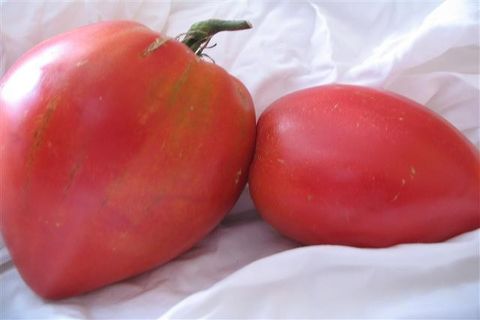
To get a good harvest of beautiful bright tomatoes in the summer, it is necessary to sow seeds for seedlings at the end of March. This should be done in a previously prepared and warmed soil, which is a well-mixed and moist mixture of garden soil, river sand, wood ash and peat.
When the first shoots appear, it is a good idea to apply a complex fertilizer. The high responsiveness of the hybrid to feeding will be felt immediately.
Watering the plants with warm water, after a while, it will be possible to ascertain the appearance of the first two leaves and make a pick. If the summer resident sets a goal to collect the highest possible yield and extend the fruiting period, the seeds should first be soaked in a growth stimulator.
Fighting disease
Diseases inherent in tomatoes can have a very different origin and history of distribution. The success of pest control lies in knowing the causes of their occurrence.
Tomato leaves and fruits can be affected by fungal diseases. If this happens, the leaves begin to wither, the trunk is exposed, and when you press on the fruits, you can see the remaining brown spots. As an effective control measure, the agricultural technician recommends the use of the drug "Strobi". The method for preparing the solution is as follows: add two grams of the drug to a bucket of water and mix everything thoroughly. The resulting composition should be used for spraying bushes during the growing season.
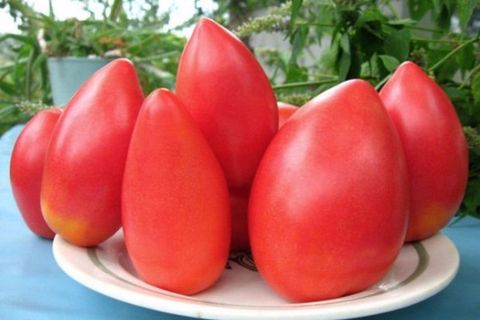
The effect of the "Strobi" preparation will be obvious even if you spray only one side of the leaf. The product can be seen on sale in the form of granules that dissolve in a large amount of water.
The Ob dome tomato can suffer from a disease such as powdery mildew.In most cases, pathology can be seen in a glass greenhouse.
Factors that favorably affect the development of bacterial spores:
- high temperature inside the greenhouse;
- insufficient watering of plants;
- lack of vitamins and minerals, weak plant immunity.
Outwardly, the disease does not manifest itself in any way. No changes in leaf shape or abnormalities in fruit development are observed. Dispute cancellation is possible. For this, it is recommended to use sodium humate, which is diluted in a proportion of 1 gram per one liter of water.
